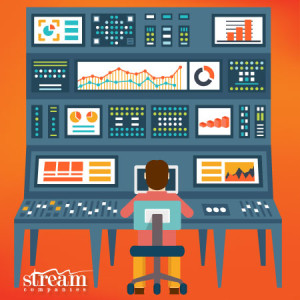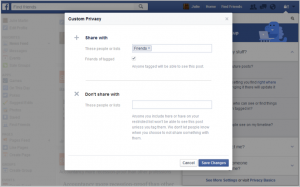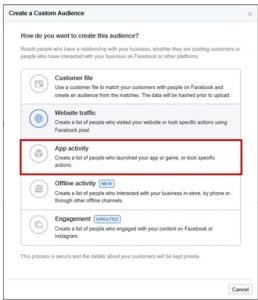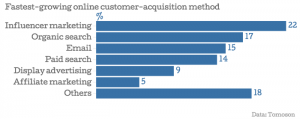A new report has revealed that businesses in both the UK and US are spending millions every year on redundant and unused software. The study conducted by the company 1E, reports that in some sectors, up to 56% of purchased software is not utilised.
That’s a sizeable percentage, and a pretty unacceptable one at that. Maximising income and minimising outgoings…that’s business 101 surely? So how is this wastage occurring at such a large scale?
Software licensing policies could be a big part of the problem. Obviously renewing your previous deal with any software provider is the most hassle free option, but gives you little to no chance of reviewing whether or not it’s meeting your expectations. The bigger the company, the longer this review period will take, but for the sake of (in some cases) millions of pounds going to waste, it’s well worth the investment.
Sumir Karayi, CEO of 1E, has commented on why these results should serve as a wake up call to any business guilty of a lethargic attitude towards unused software.
“This data clearly demonstrates that organisations are not optimising their software assets in a way that reduces cost.”
Karayi continues: “A figure of 28% of installed, but unused, software is shocking and should serve as a clear message to every CxO and IT asset manager that they need to implement processes to ensure that installed software is not only licensed, but used to ensure a positive financial impact back to the organisation”.
Software audits are becoming essential for businesses of a significant scale. Not only do they ensure all your software is appropriately licensed and authorised (therefore stopping the BSA getting involved), they can also help reduce costs dramatically.
So how can you conduct your own software audit? Below are the five steps you need to follow to make your audit successful.
Conduct a Software Inventory
Create a comprehensive list of what software you have, where it is being used and what for.
Meter Application Usage
Once you have an inventory, you can start looking at the usage data. This can be measured using metering tools or tracking tools. These are essential if you’re looking to accurately measure what software is being well used and what it is being left under utilised.
Gather Software Licensing Data
Next you need to find out how many licenses your business owns for each piece of software. This can all be found in your purchasing records, if you’re unsure you can always contact the publishers to obtain the information.
Adjust License Counts
Now that you have both the licensing data and the usage data, you can start comparing the two to find out which licenses are being used and which are going to waste. This waste can then be cut out when renewing your policies.
Establish and Communicate Software Policies
You should have written software policies and procedures regarding installation and usage. This will help you to oversee the ongoing software usage of your business and prevent the necessity further major audits.
You can take a look at some of the most eye catching statistics from 1E’s report in the infographic below…
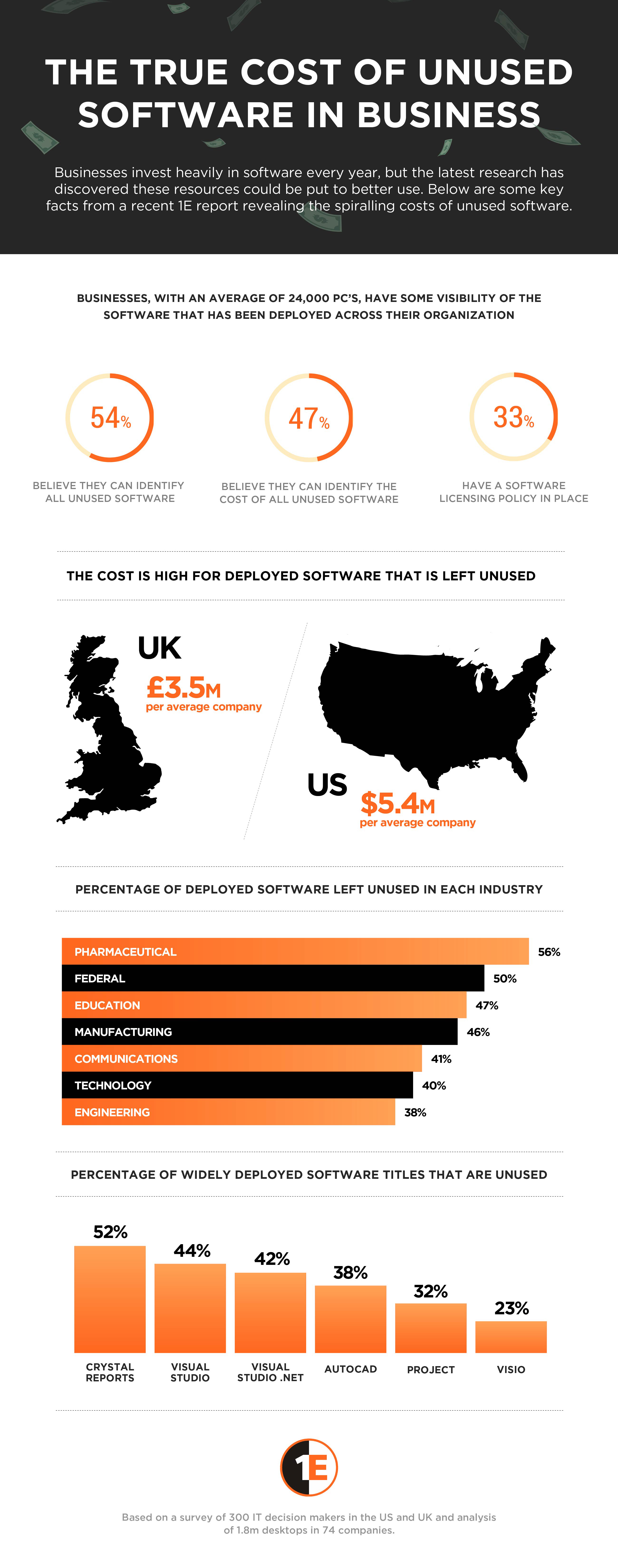 Provided by 1E
Provided by 1E
(243)


